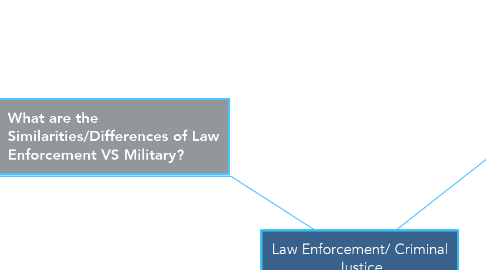Law Enforcement/ Criminal Justice
Door David Busenbark


1. What are the Similarities/Differences of Law Enforcement VS Military?
1.1. Although both have specific Uniforms, the military has more strict Regulations.
1.2. Daily Operating Procedures vary on a wide variety of bases, such as climate, location, time of year.
1.3. Rank Structure in both services are similar but are not fully comparable.
1.3.1. Sources: DOD Publications, .gov websites, Articles comparing CJ vs. MIL, Experts in both fields.
1.4. Both services have established Chain of Commands which are used in the exact same way
2. Technology has advanced frequently in the past 10 years. How does this effect this field? What about 10 years in the future?
2.1. We live in a world where everyone and their mother owns or has access to a cellular device. This has the potential to aid Officers and on the other hand aid criminal activity.
2.1.1. Source: Journals, Experts in Field, Criminal Justice Databases.
2.2. Forensic Research has come a long ways in the part 30 years, allowing us to solve violent crimes.
2.2.1. Source: Forensic Databases, Encyclopedia for back ground information on Forensics.
3. What are the average years in service for this profession?
3.1. The average age of applicate/new join is 25 years of age.
3.1.1. Source: .gov statistical websites, credible news sights, Criminal Justice Databases, Local department websites.
3.2. There are more male applicants per year than female.
3.3. Salaries vary by state, department, rank and years in service.
3.4. Hiring and Retention.
4. How is Racial Discrimination affecting Law Enforcement today?
4.1. This could affect future recruiting and retention within Law Enforcement Agencies.
4.2. Demographic of U.S. Police Shootings by race.
4.2.1. Sources: Criminal Justice/Law Enforcement Statistical Databases, Newspapers, Online news articles.
5. What types of introductory and specialized training do officers receive?
5.1. Each state and agency has their own training and selection process.
5.2. Federal Employers tend to have higher standards to their application process than local state agencies.
5.2.1. Sources: Application Screening Forms for all Levels, Encyclopedias of Criminal Justice for background training information.

